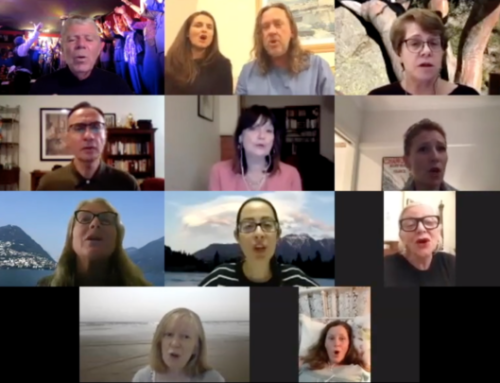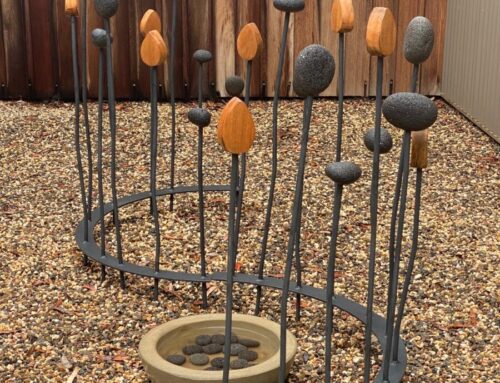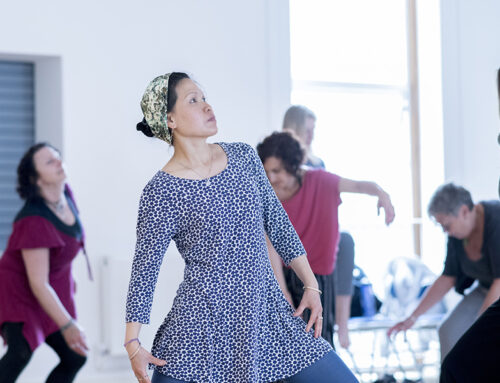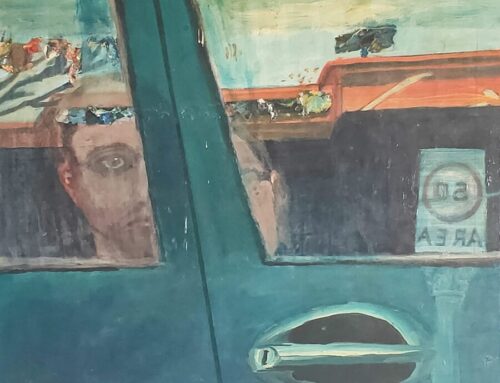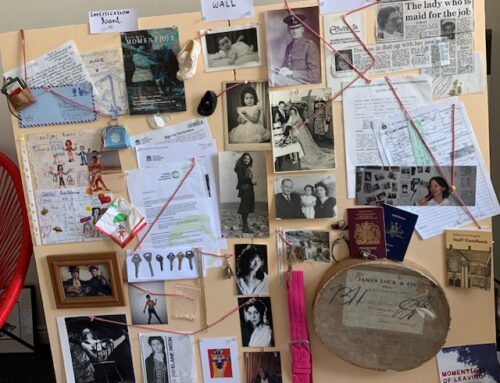Michele Elliot works with installation, textiles, drawing and sculpture. She describes her practice-led art-based research as material explorations in relation to human connectivity, mapping and memory. This work, ‘my brother’s hand’ is a sombre refection of the impact the bushfires have had, hand-crafted from gathered charcoal and a garment that reminds us of a hospital gown. Poignant indeed.
My artwork reflects my experiences and sometimes events that impact on my surroundings, family, community or beyond. Artwork arises from feeling, curiosity, concern. This work, ‘my brother’s hand’, is a direct response to the distress I felt over the recent summer and in particular, the bushfires on New Year’s Eve on the South Coast of NSW. This work comes directly from watching the fires unfold from afar. I was in Western Australia in late December/early January and felt anxiety and concern for my family. On my return I went to see them as soon as was safe and possible.
Much of my work can take months to complete, whereas ‘my brother’s hand’ was conceived and made in just over a week. The devastation left by the summer bushfires was shocking, and I noticed both a physical and emotional reaction in my body driving through the blackened and stripped-back landscape.
I felt a kind of emptiness during that visit with my family. That feeling stayed with me for some time. I wanted to bring some charcoal back, as I was overcome with a strong desire to make something. As my nephew and I walked around the perimeter of their block, he told me about the events of New Year’s Eve, about the colour of the sky, the acrid smoke. As we collected charcoal, he talked about the roar and ferocity of the fire and the speed with which it arrived.
It was a very subdued few days. My brother has a beautiful garden, and it was sad to see so many of the plants affected. His mango trees were badly damaged, the leaves singed and the fruit inedible. The native plants and trees fared a little better. The smell of smoke inside his orchid house was overpowering. On the morning I was leaving, he gave me a fern – microsorum diversifolium – with its one electric green frond. I also picked up four banksia cones from the ground. When I looked at the green of the fern frond, I knew I wanted to wrap the cones in a similar colour.
My final act before driving slowly up to the highway was to collect some water from the lake. I was still thinking about drawings, and the possibility of making ink. Once I was home, I gathered these materials and cleared some space in my studio. I picked up an old worn cloth to tear up and wipe down the table. As I opened it out, its shape seemed like that of an imperfect hospital gown.
I crushed the charcoal with a mortar and pestle, mixed it with lake water and began to test out some mark making. I abandoned the idea of paper and worked straight on to the cloth. In a kind of stitching and binding spell, I mended a tear with red thread and sewed two tiny red circles into the cloth, to make the fire small and contained. I found some green embroidery cotton and wrapped the middle of the cones, including a brooch pin at the back. The cloth was drying, the work was unfurling through the materials and I followed along.
The making effect went some way to fill part of the emptiness, the sadness I experienced for so much loss, of lives, of country, of the bush and wildlife, of people’s homes. And particularly the vulnerability I saw in my brother.
The combination of thinking and making as an artist helped me to process the physical and emotional impact of this experience. I decided I would include everything, the drive there and back, the days spent with my family, the landscape, the distinctive smell, the blackness of the trees, conversations, meals, walking, gathering of materials, coming home and beginning the task of unfolding the work. But there is also a sense of recovery in the time that it takes to make work, in the actual making of the work. And there is a visual reference of recovery, the fern and the green thread around the banksia cones signifies the minute signs of recovery I witnessed on my visit to Lake Conjola in March.

Michele Elliot
Making is at the heart of my art practice, through material research and exploration of process. It is important to make connections between the materials I use and the actions it takes to realise an idea, to make sense of the work and find meaning in what I do. There is a familiarity and a trust in an ongoing practice that builds up over the course of time. I think this allows me to fall easily into the language of materials. It isn’t always obvious at first, and sometimes one step precedes another. The material determines what is required next, or the prompt comes from writing, photographing or even just walking.
More of Michele’s work can be found at www.micheleelliot.com

